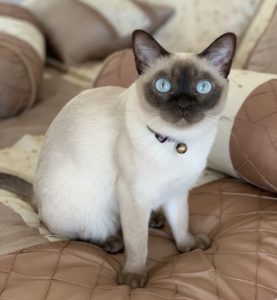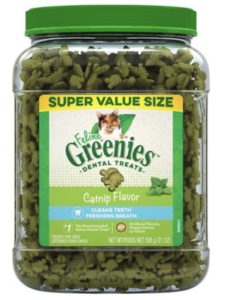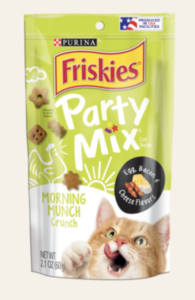Carcinogens In Cat Treats: Is Your Cat Eating Them?

Aylen
TREATS! Cats seem to automatically understand this word even though they may ignore everything else we say to them. Call it selective interest or otherwise, cats like to be their own boss and make their own rules. As a cat parent, however, it’s up to you to make the rules regarding their diet, and this includes treats. Ingredients matter in pet food products, including the treats you give. Therefore, how do you know if there are carcinogens in the cats treats you buy?
The time my husband bought cat treats
My husband has a daily routine where he feeds Aylen and Lili treats when he comes down to fix his lunch. If he forgets they are all too happy to remind him. I received an email from my husband the other day telling me he was going to make a special trip to the pet store to get Wiggals (Aylen) her favorite treats because there were only crumbs left. I had just checked a few days earlier when I was shopping, and they were out of stock. However, he was determined to go again.
When I arrived home later he informed me that her favorites were indeed still out of stock. The conversation went something like this:
“But I found this other kind and she loves them!” he added excitedly.
“What’s in them?” I asked. Grabbing the package I began to read the ingredients list out loud: “Chicken meal, rice flour, barley, pea fiber…She can’t have these.”
“Why not?”
“Because they have carbohydrate ingredients in them, which is essentially like sugar…and they are not good for cats.”
“But she likes them!”
“Of course she does! But they’re still not good for her, and I don’t want her eating ingredients that are not appropriate.”
They went in the trash.
Cat treats contain sugar
Don’t be fooled by clever packaging and marketing hype! Read the labels. Does your cat’s treats have carbohydrates in them? So many cats I work with are addicted to sugar because they’re fed dry food and treats with ingredients like rice, corn, wheat, barley, peas, soy, and other legumes. These are broken down in the body as sugar which is known for causing inflammation, diabetes, GI upsets, cancer and other metabolic stress. Even if given in small amounts like treats, think about the load over time. Just like a cocaine-effect in humans, it has an effect on the brain that drives that hunger for more.
Chemicals in cat treats
The other carcinogens in cats treats include food dyes, GMO ingredients, and chemicals labeled “natural flavors.” You’ll see Blue 2, Yellow 5, Yellow 6, Red 40, BHA and BHT which are known carcinogens. Furthermore, you can bet that any corn product is genetically modified, such as corn gluten meal and corn starch. GMO ingredients come from plants that have been heavily sprayed with herbicides like glyphosate, also a known carcinogen.
Toxins and toxic ingredients in cats treats
Meat by-products are often used in cat treats as well, which may or may not even truly be meat. Instead, these ingredients can be carcass remains, fur, bone, and other parts not fit for human consumption that rendering companies cook up and use in pet food. They are commonly 4-D ingredients sourced from dying, disabled, diseased or dead animals not killed by slaughter (ie: road kill, livestock, and euthanized animals). 4-D ingredients are extremely toxic and unfit for consumption, yet the pet food industry has no problem using them in pet food.
 What about dental cat treats?
What about dental cat treats?
Sadly, many of the dental treats for cats on the market contain the same carbohydrates and food additives as regular treats. The starches break down in the mouth and actually stick to your cat’s teeth; they do not scrape off tartar and plaque–they contribute to it. Therefore, don’t fall for the marketing hype.
Healthier options for cat treats
Choosing a healthier, more species appropriate cat treat is a better option. For example, single ingredient treats using real meats like chicken, turkey liver, beef liver, whitefish, salmon, venison liver are excellent. Products like these are usually freeze dried to preserve freshness and don’t use any preservatives or other ingredients that are not good for cats. They will cost a little bit more, but the long term goal of helping your cat live a long, healthy life is worth it. Alternatively, you can make your own! Simply lightly bake or freeze-dry fresh meat or organ meats in small, bite size pieces. They also double nicely crumbled as a food topper.
Want to learn more about carcinogens in pet food ingredients? Check out this article.


